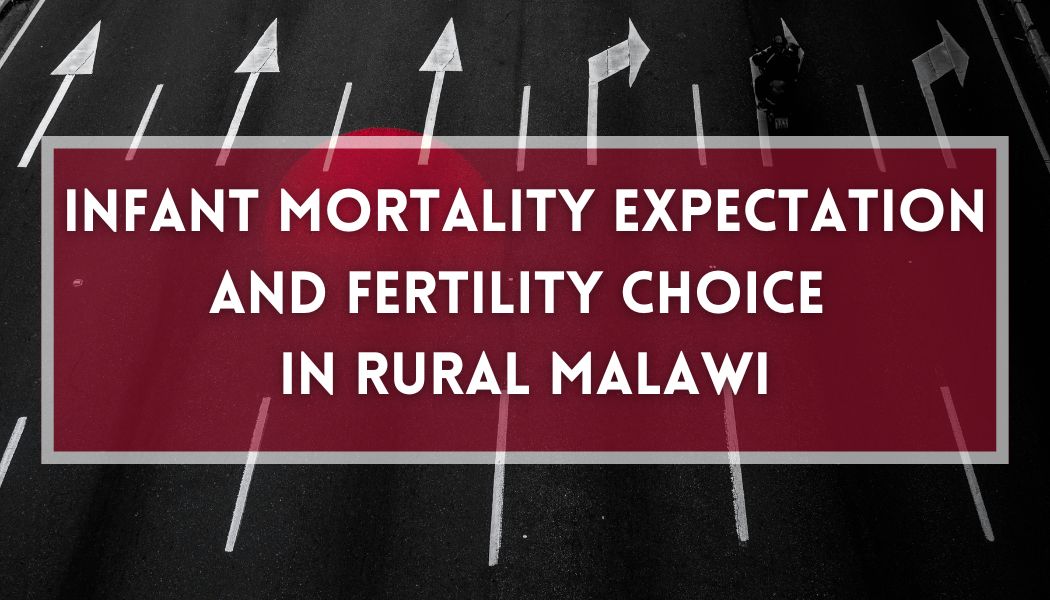
Commons Link
Infant Mortality Expectation and Fertility Choice in Rural Malawi
Working Paper Number
224-111
Publication Year
2024
Paper Abstract
For decades, population research has been interested in the complex relationship between child mortality and fertility, with a key focus on identifying replacement behavior (fertility response to experienced child mortality) and hoarding behavior (fertility response to expected child mortality). Using unique data from the Malawi Longitudinal Study of Families and Health (MLSFH), we investigate the impact of individual-specific subjective infant mortality expectations on fertility choice. We instrument the potentially endogenous infant mortality expectations with the average of parents’ ratings of children’s health to address a potentially omitted variable bias such as parental taste for health. Consistent with the hoarding mechanism, we find that a 10 percentage point decrease in infant mortality expectations leads to a 14 percentage point decrease in the propensity to have a child in the next 2 years from a baseline propensity of 43%.
Acknowledgements
We would like to thank David Byrne, Mario Fiorini, Pamela Giustinelli, Shiko Maruyama, Peter Siminski, Christine Valente, and the participants at the PhD Conference of University of Technology Sydney, Sydney Development Economics Group Workshop, Asian and AuWe gratefully acknowledge support for the Malawi Longitudinal Study of Families and Health (MLSFH) by the National Institute of Health (NICHD R01 HD053781, R01 HD087391), the Population Aging Research Center and the Population Studies Center at the University of Pennsylvania (supported by NIA P30 AG12836 and NICHD R24 HD044964). Delavande acknowledges funding from the the ESRC Research Centre on Micro-Social Change (MiSoC), award number ES/S012486/1.